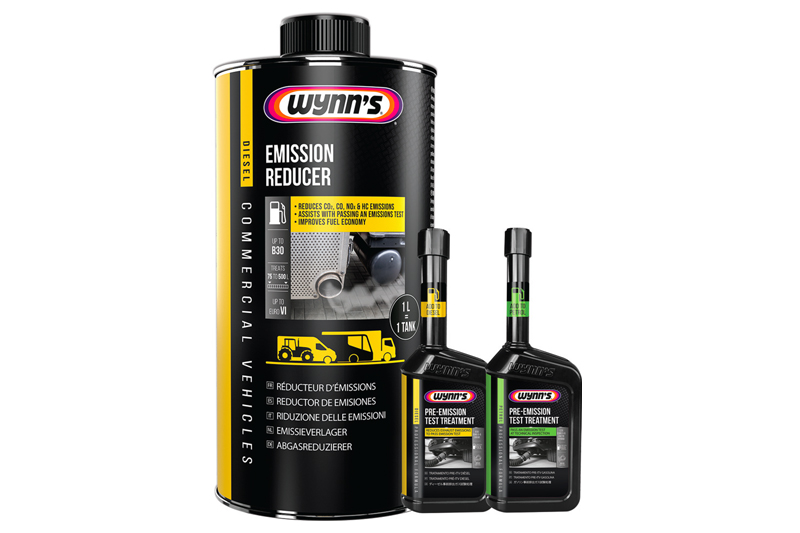
Wynns offers its advice on aiding your customers pass the emissions aspect of the MOT test, and the perfect product for it.
Protecting the environment is a big concern for the government as its aim is to reduce pollution emissions and improve air quality in cities. That is why it has included and reinforced emissions tests during MOT inspections. Emission test purpose is to ensure that the vehicle’s engines operate correctly and to keep pollution to a minimum. If vehicles are not serviced regularly, they may not pass the MOT test.
Diesel cars
During an emission test, the vehicle’s tailpipe gets measured to ensure the vehicle does not exceed current testing limits. The diesel emission test measures opacity – the density of particles exiting the exhaust. This is measured in a light chamber and, the greater distortion of light indicates a greater particulate content. This is then calculated to a reading by the emission analyser.
A diesel test uses the plate value for the individual vehicle, and this can be found on the vehicle chassis plate. The plate value is the manufacturer’s data for the level at which the vehicle must be below to pass the emission test.
Petrol cars
An emission test is a measurement of a vehicle’s tailpipe to ensure the vehicle does not exceed current testing limits. A petrol Emission test measures the gasses exiting the exhaust and the required reading must be within specified limits for the vehicle. High CO (carbon monoxide) or high HC (hydrocarbons) and lambda not within the specified range are reasons for failure.
Be prepared
Perfect fuel combustion and good exhaust gas after-treatment system operation are required for a successful MOT test and can therefore be carried out during services. Clean the entire fuel system pre, during, and post-combustion to effectively reduce vehicle emissions with a product like Wynn’s pre-emission test treatment: developed to give a fast reduction in exhaust emissions to help pass the emission test, a fast-acting product for rapidly reducing exhaust emissions and soot to help meet new emission limits and reduce exhaust smoke.
What affects combustion?
Many factors can cause a vehicle to fail an emission test and system cleanliness quality and operation are vital for a good result. These include:
- The condition and quality of the fuel filter and air filter are vital for correct system operation.
- Contamination in the intake system, on the intake valves, and the swirl flaps disrupts the flow of air into the combustion chamber affecting combustion efficiency and increasing the emissions.
- EGR valve operation and cleanliness are vital for controlling combustion temperatures and maintaining emissions.
- Maintaining turbo operation assists the engine in the combustion process increasing the efficiency of the engine.
- Clean combustion and maintaining exhaust gas temperatures are critical for the correct operation of the Catalyst, DPF (Diesel Particulate Filter), and GPF (Gasoline Particulate Filter), and system cleanliness and efficient operation are vital to reduce the emissions from the exhaust.
- Oil system cleanliness and the correct quality of the oil are vital for correct crankcase ventilation, engine efficiency, and emissions.









